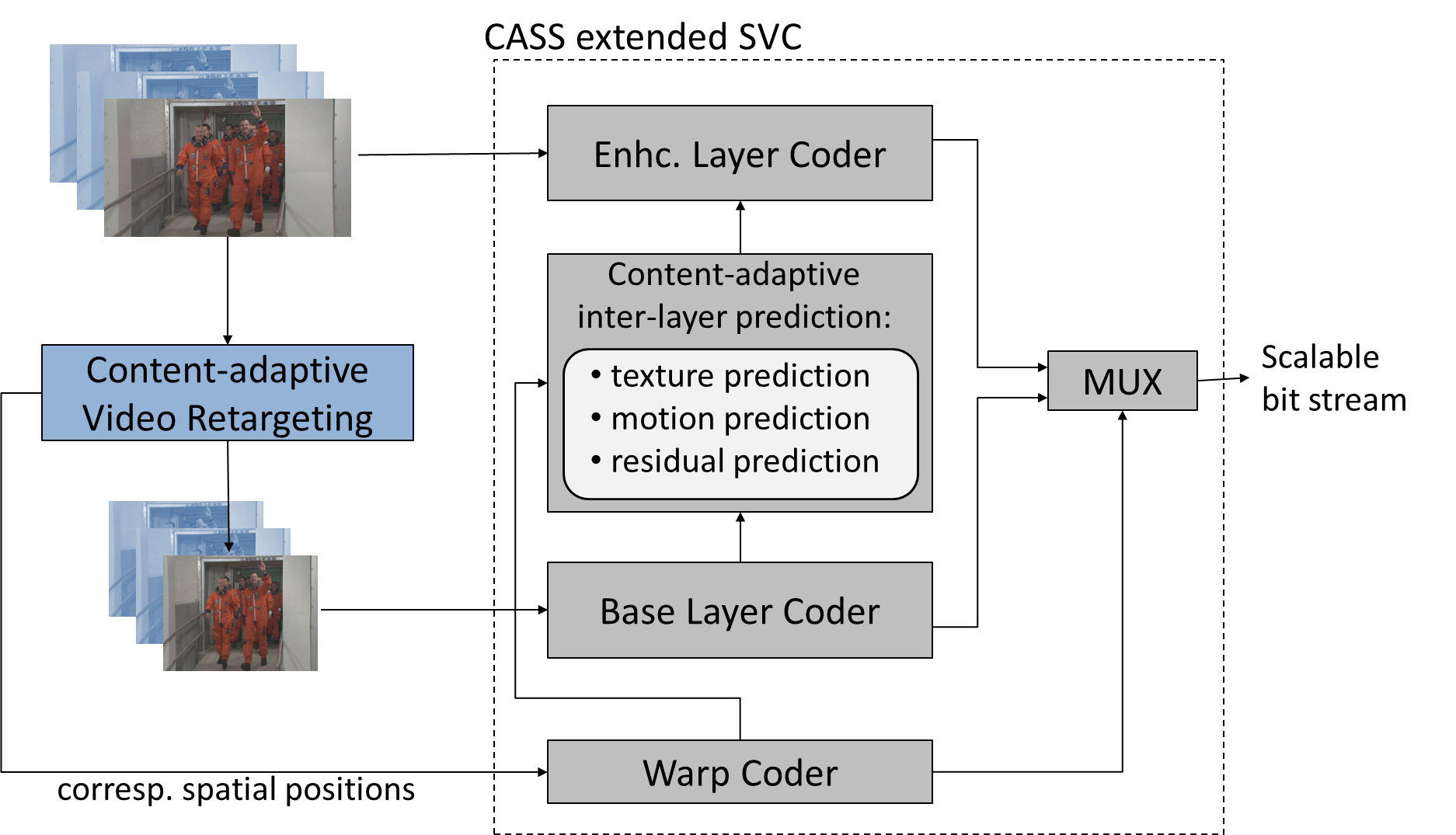Extending SVC by Content-Adaptive Spatial Scalability
This paper provides details on a complete integration of Content adaptive Spatial Scalability (CASS) into the scalable video coding extension of H.264/AVC (SVC).
September 11, 2011
International Conference on Image Processing (ICIP) 2011
Authors
Yongzhe Wang (Disney Research)
Nikolce Stefanoski (Disney Research)
Manuel Lang (Disney Research/ETH Joint PhD)
Alexander Sorkine-Hornung (Disney Research)
Aljoscha Smolic (Disney Research)
Markus Gross (Disney Research/ETH Zurich)
Extending SVC by Content-Adaptive Spatial Scalability
CASS enables the efficient encoding of a high-quality bit stream that contains several versions of an original image sequence. Thereby, each such image sequence has been created by content-adaptive and art directed retargeting to different display aspect-ratios and/or resolutions. Non-linear dependencies between spatial layers, which have been introduced through content-adaptive retargeting, are exploited by a generalization of the three inter-layer prediction tools of SVC, i.e. by content-adaptive inter-layer texture, motion and residual prediction. The CASS extended SVC enables the transmission of video content which has been specifically adapted in an artdirected way to multiple display configurations (e.g. to SD and HD displays with 4:3 and 16:9 aspect-ratios, respectively) using a single compressed bit stream. With our extension, video content of higher semantic quality can be transmitted in a scalable way by introducing an average overhead in bit rate of 9.3%.

